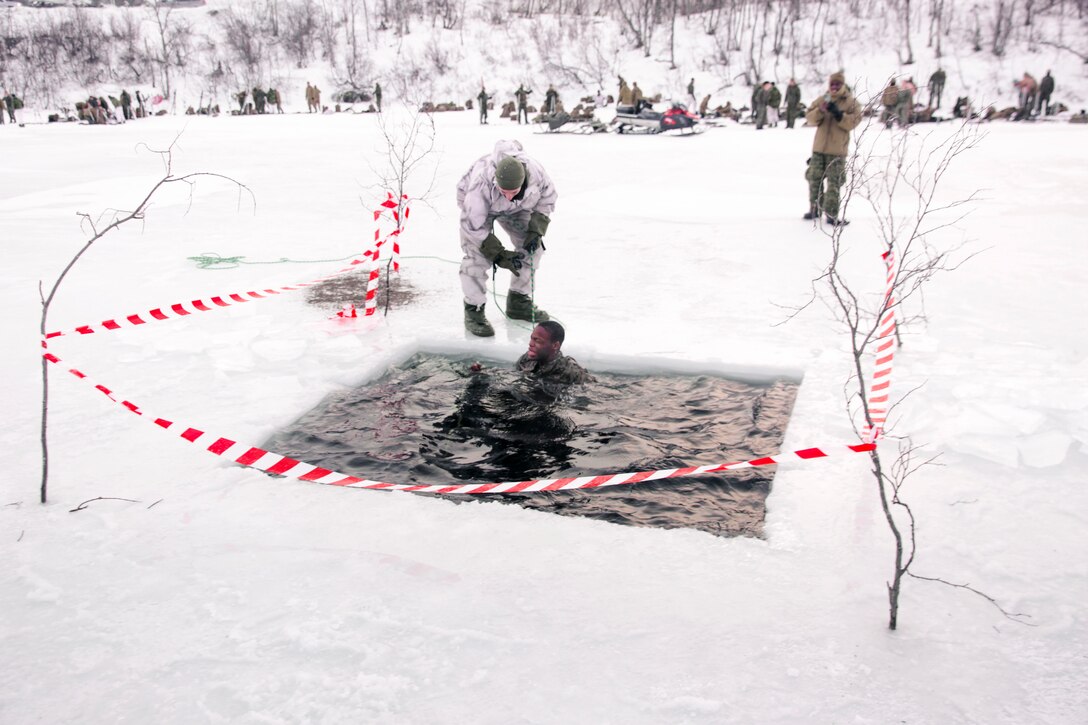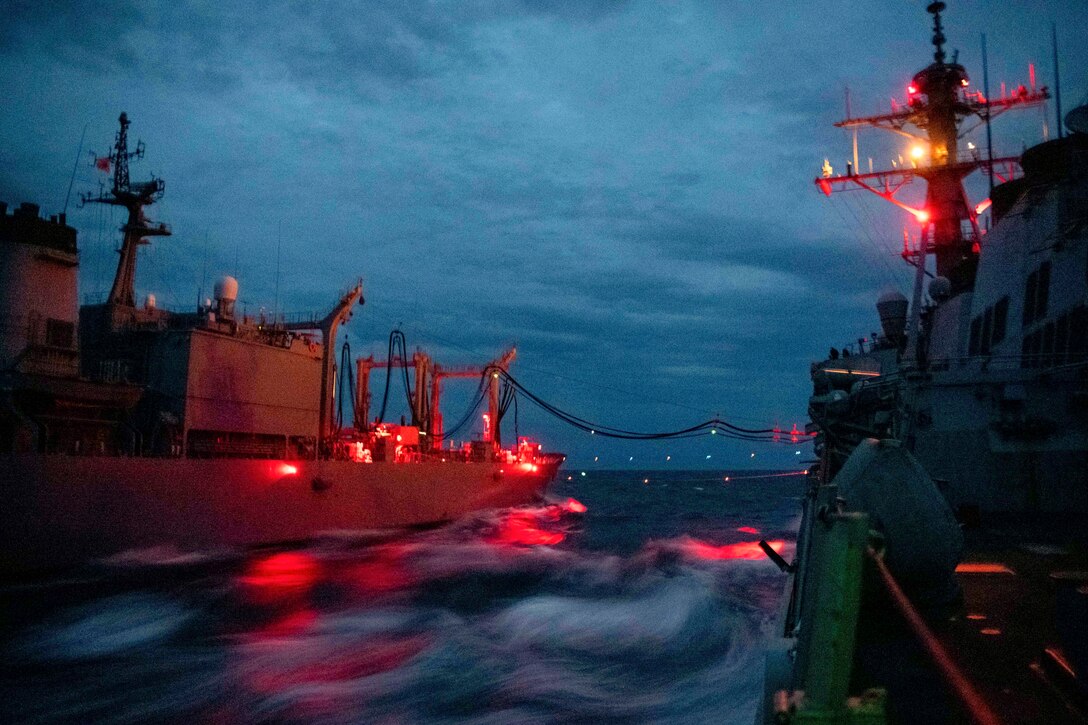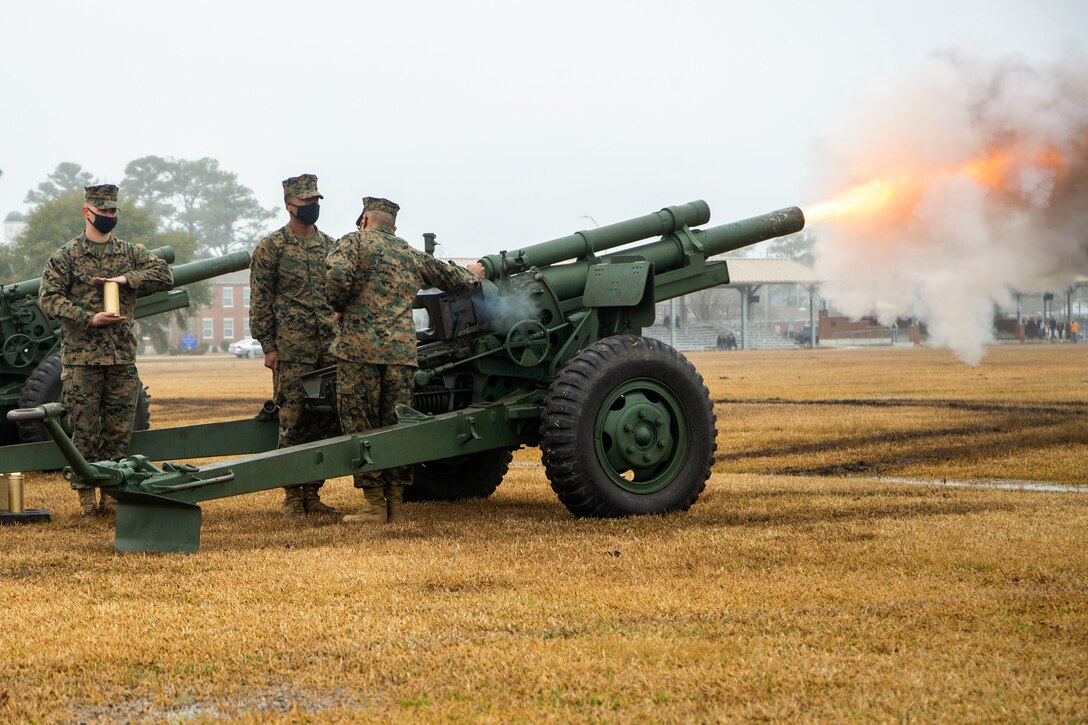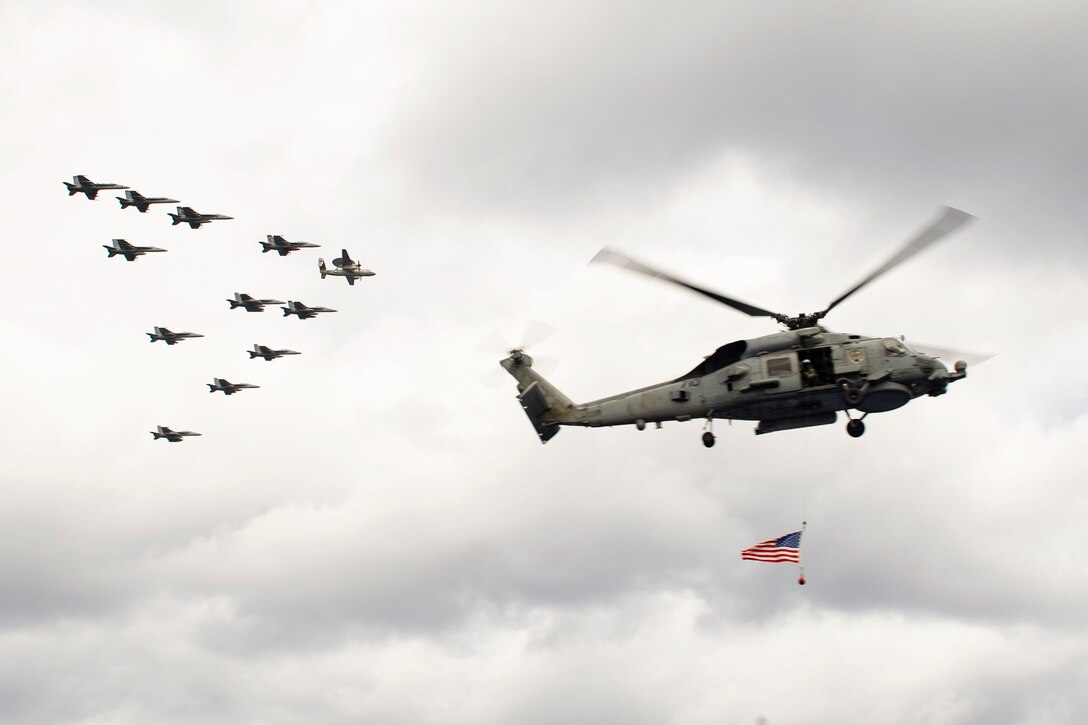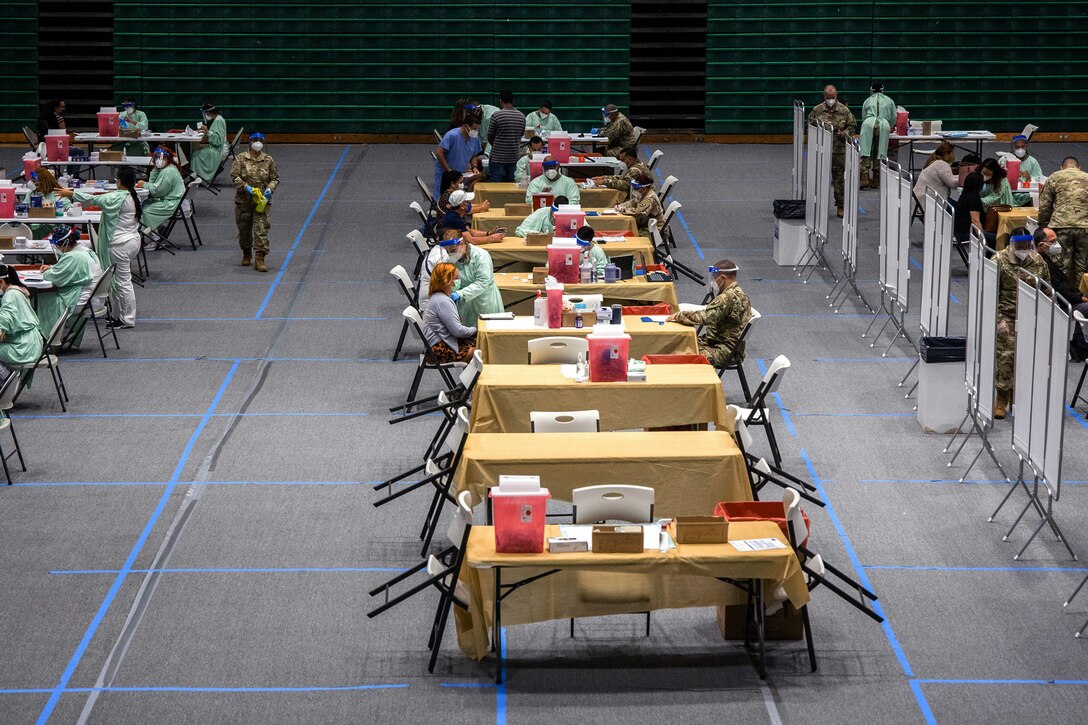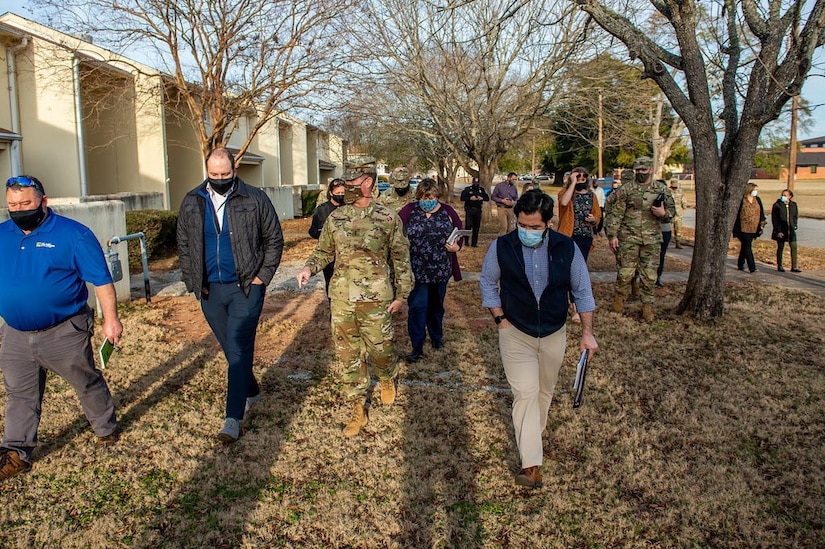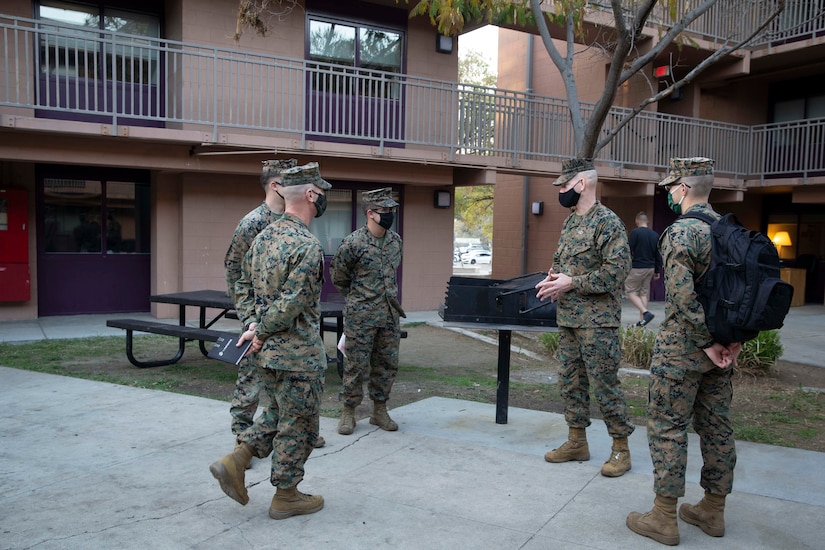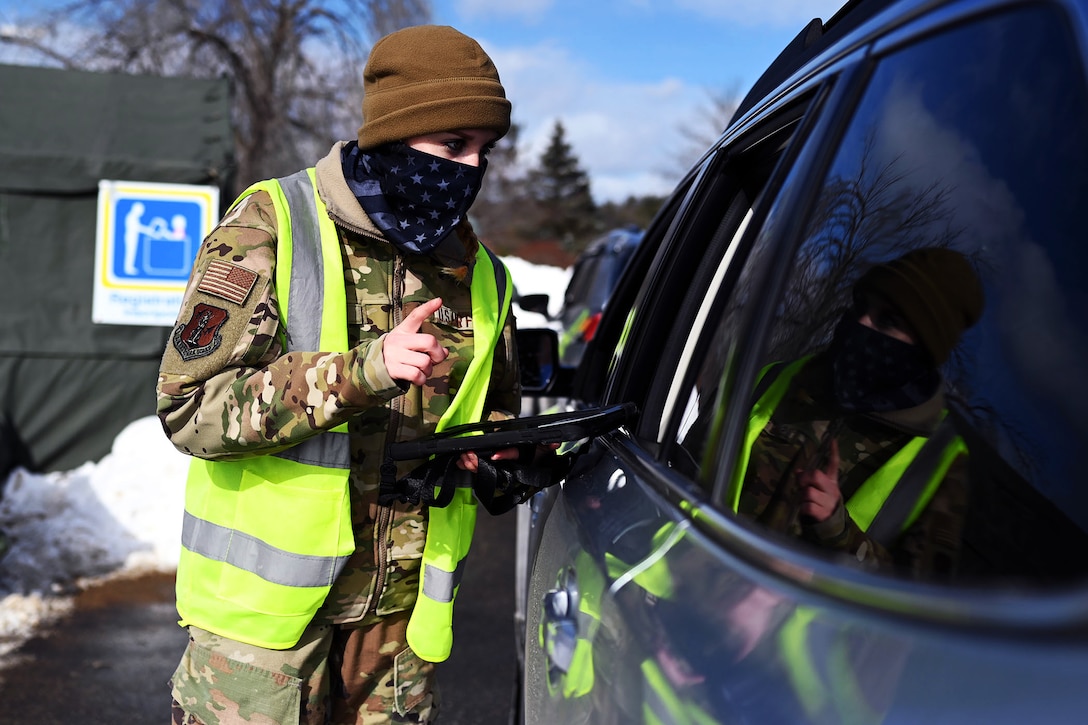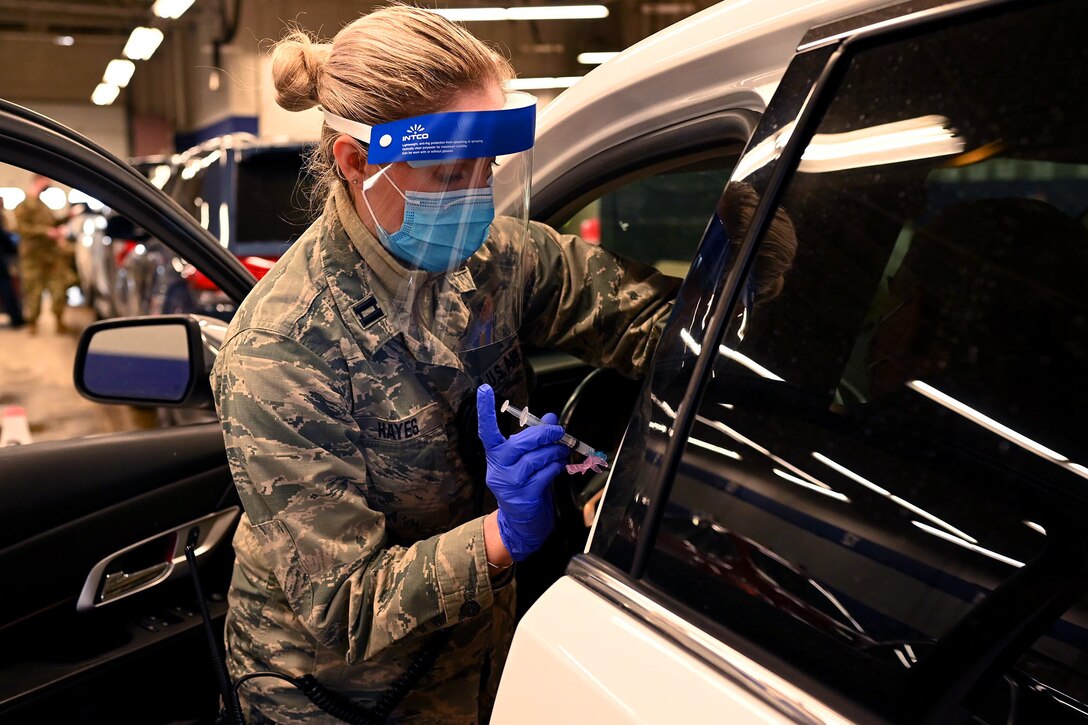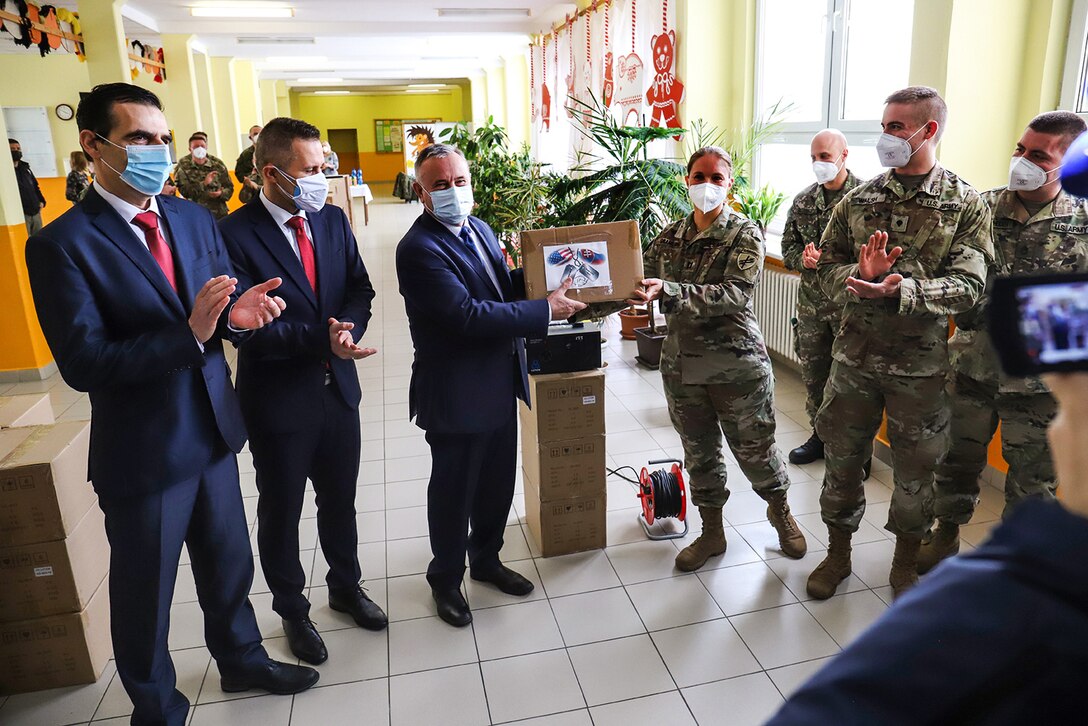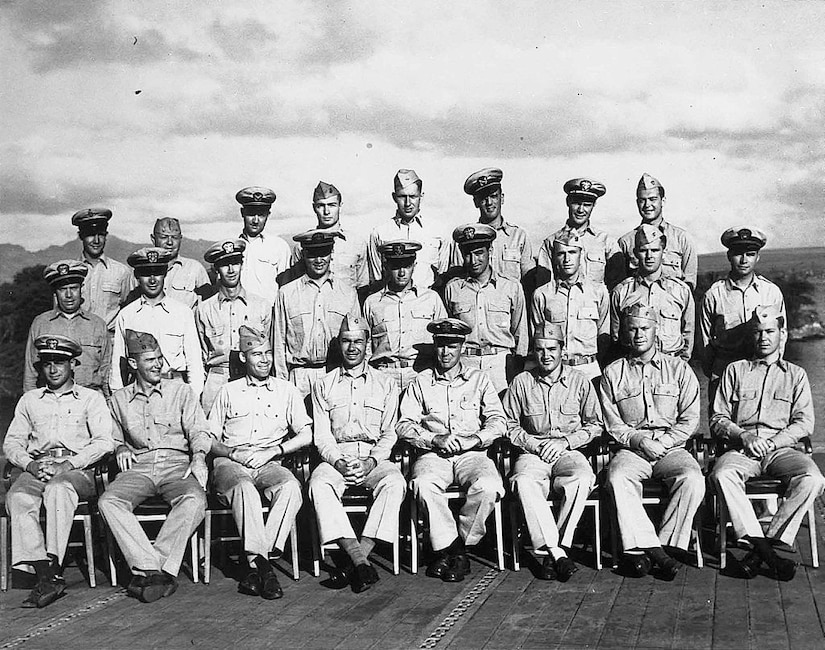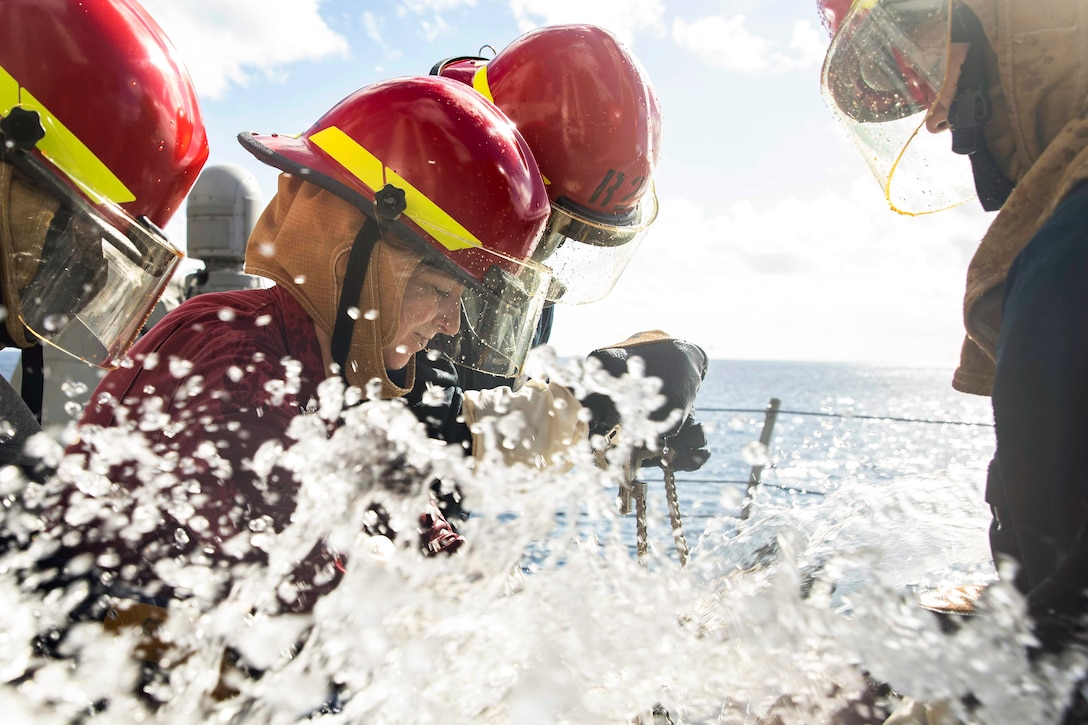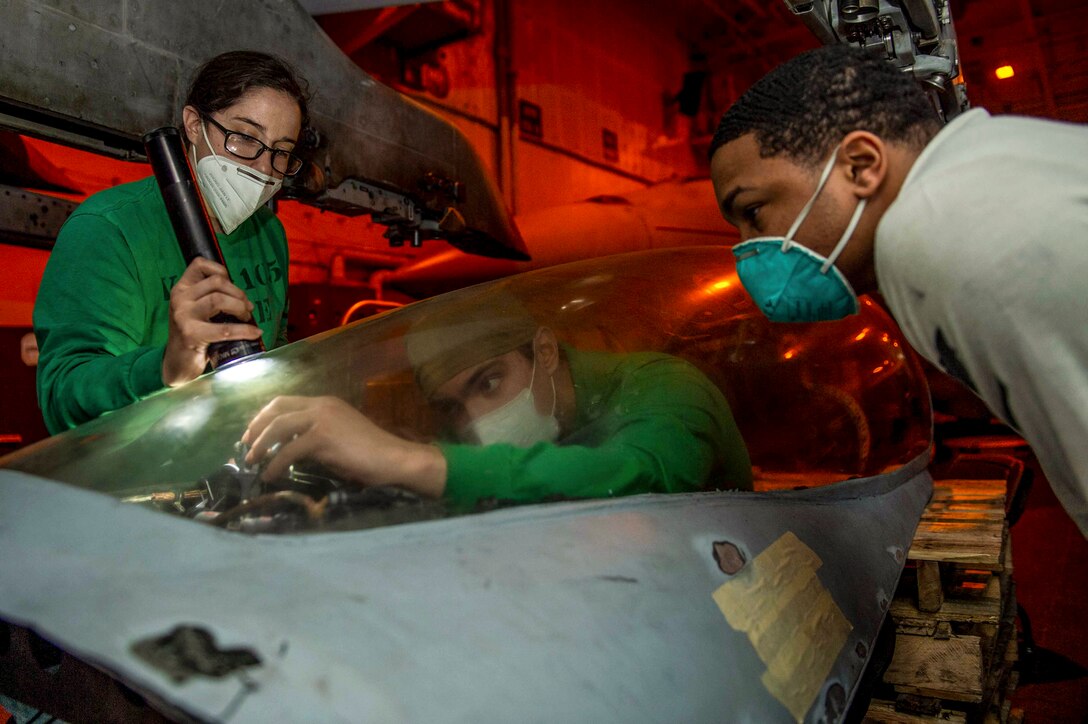Feb. 16, 2021
STAFF: I'm going to get ready and get started here.
So this afternoon we have (senior defense official one) the *** and
(senior defense official two) the *** They are here to discuss the NATO
Defense Ministerial and the Department's priorities for the event.
In line with the ground rules in the media advisory, this interview
is on background attributable to U.S. Senior Defense Officials. So when
you see the transcript later, *** will be identified as Senior Defense
Official one, *** is Senior Defense Official two.
So (senior defense official one) in a moment is going to offer some opening remarks.
Following the opening remarks, I will call on reporters for
questions. We have about 20 minutes or so, so I'd ask that you keep the
focus on the topic at hand and keep it to one question please.
With that, (senior defense official one), the floor is yours.
SENIOR DEFENSE OFFICIAL ONE: Thanks so much and thank you all for
your patience as we had tech adventures. So good afternoon, I would
like to thank you all for the opportunity to talk about the upcoming
NATO Defense Ministerial and help communicate the importance of this
ministerial to the Department.
I want to spend a few minutes just offering some context about the
Department's priorities for the ministerial. As you all are no doubt
aware, this will be the administration's first engagement with the NATO
alliance and with the international community.
The secretary's first priority will be to carry forward the message
that you heard from the president at the State Department and at the
Defense Department in recent weeks. He underscored that diplomacy and
working with our allies and partners is the basis for our global power
and collective security.
The secretary intends to assure our allies that the United States'
commitment to the NATO alliance and to Article 5 remains ironclad. He
will reinforce that the United States is committed to consulting on
issues that impact allies, including our global force posture review and
the missions in Afghanistan and Iraq.
And the secretary is looking forward to virtually meeting and hearing
from NATO counterparts and to -- and to -- and to addressing important
issues including: strengthening our collective deterrence and defense
to protect our populations, our most important duty; reinforcing allies
shared responsibility to procure, prepare, and provide the ready forces
and capabilities necessary to accomplish this -- this duty; reviewing
Russia's destabilizing activities; and discussing the challenges
presented by China; reviewing our operations, specifically the Resolute
Support Mission in Afghanistan and the NATO Mission in Iraq; and hearing
about the secretary general's NATO 2030 initiative to ensure the
alliance remains strong militarily, becomes stronger politically, and
takes on a more global view.
With that, (senior defense official two) and I look forward to your questions. Thank you.
STAFF: All right, we'll start in the room with Bob, Bob Burns from A.P.
Q: Hey, this is Bob Burns with A.P. On the -- on the issue of
Afghanistan, I don't know which one to address, but -- so the question
obviously about the May 1st deadline looms, approaching quickly. Can
you say that -- that Secretary Austin will express the administration's
view on that at this point?
And in a related Afghanistan question, in -- you know, in your view
-- in the administration's view, what incentive does the Taliban have to
accept any delay of that deadline? Why -- why would they do that?
SENIOR DEFENSE OFFICIAL ONE: Thanks for that question, Bob,
appreciate it. So Afghanistan is, of course, on the agenda for the NATO
Defense Ministerial and Secretary Austin looks forward to consulting
with NATO defense allies on it.
As you know, of course, the Department is participating in an
administration-wide review and there have not been any decisions on
Afghanistan troop levels. The United States and NATO went into
Afghanistan together, we will adjust together, and if the time is right
we will leave together.
On your final point regarding Taliban incentives, I would say right
now there is this whole-of-government review that the Department of
Defense is actively participating in, and I think we can assume they'll
be looking at all the different aspects of that conflict.
Would you like to add anything?
SENIOR DEFENSE OFFICIAL TWO: Yes, I guess I'd just add to that that,
you know, one of the dimensions, of course, is reviewing the
U.S.-Taliban agreement including Taliban compliance with that
agreement. And so as to their incentive, I think there's every
incentive for them to -- to live up to that agreement.
And -- and -- and we'll see how it turns out in the review, but --
you know, I think that it -- it will play into how -- how our
government, you know, comes to a conclusion on where we should go. And
then we will look forward to consulting with our allies at NATO as well
in the -- in the days and weeks to come.
STAFF: Okay, thank you. Let's go to, Tom.
Q: Yes, obviously on Afghanistan -- and you mentioned compliance,
Jens Stoltenberg just yesterday said there's a need for the Taliban to
do more when it comes to delivering on their commitments. Would you
agree to that? Both of you, if you could, address that?
And also, there was a USIP study, as you all know, mandated by
Congress. And General Joe Dunford, former chairman and -- a lot of
Afghan time, he said, if the U.S. leaves precipitously you could likely
have a civil war and the terrorists could reconstitute in 18 to 36
months. I wonder if you could both address that. Does that ring true
to you from what you know?
SENIOR DEFENSE OFFICIAL ONE: Thanks for that -- for that question. I
would say that violence must go down. I think as you heard from the
secretary general yesterday, we all are in agreement that we do not want
Afghanistan to become a safe haven for international terrorism again.
My understanding is that the review being conducted across the
government is -- is broad and deep. And so I'm fully confident that
folks are deeply cognizant of the USIP study and all of the, kind of,
insights from the smart folks that -- that have conducted it.
Do you want to add anything?
STAFF: Okay. All right, let's jump over to the phones --
Q: Wait --
(CROSSTALK)
Q: -- You said "violence must go down." If it doesn't go down, therefore, troops shouldn't leave?
SENIOR DEFENSE OFFICIAL ONE: I am not saying that. I'm saying that
there is a desire across the board for violence to go down in
Afghanistan.
STAFF: Okay. All right, let's jump to the phones now so I'm keeping it -- keeping it even as possible. Sylvie from AFP?
Q: Hello, thank you. I would like to ask a question about Iraq.
Does the latest rocket attack in Erbil -- does it change the position of
the administration on the strategy in Iraq?
SENIOR DEFENSE OFFICIAL: Thank you very much for that question.
I'll refer you all to the readout that Secretary Austin just released of
his call with the Iraqi defense minister. He held that call just hours
ago.
I'd also refer you to the statement by Secretary of State Blinken yesterday. It was a strong and powerful statement.
Obviously, the Department of Defense expresses our condolences to the
injured service member, as well as to the family and friends of the
contractor killed, and to those who were injured.
Would you like to add on that?
STAFF: Okay. All right, thank you very much. Staying to the phones
for the second -- or for the next question, let's go to Helene Cooper
from The New York Times.
Q: Hi, thanks for doing this. I'd like to stay on Iraq. The Trump
administration sort of had a red line that an American killed was
basically a line they did not want to see crossed. Does the Biden
administration have a similar red line?
SENIOR DEFENSE OFFICIAL: Thanks for that question, Helene. Right
now, I think folks are studying hard the events that have happened in
Iraq over the last 24 hours.
You have seen various folks, including, of course, the Secretary of
Defense, reach out to their counterparts and are looking closely at the
situation and what makes sense from a U.S. policy perspective.
I should note, since we are, of course, trying to talk about the NATO
defense ministerial today, Iraq will be on the agenda for the
ministerial later this week and we are enthusiastic about the continued
and, indeed, enhanced NATO focus on security and stability in Iraq.
STAFF: Thank you. Barbara Starr?
Q: I wanted to turn to ask you about Russia at the ministerial.
Other than referring to generally Russia's destabilizing activities,
what is the approach on Russia, on -- at the ministerial agenda? What
are the top priorities to be discussed about Russia specifically? And
at this point, what does the U.S., the Department of Defense need to see
from Russia to be able to trust them?
SENIOR DEFENSE OFFICIAL ONE: Great, thank you so much for those
questions. Look, the -- the -- the first session of the defense
ministerial is going to focus on the alliance, on the strength of
deterrence and defense, and I think that is inextricably tied to how one
thinks about Russia, of course.
I mean, at the end of the day, NATO's most important function is to
present a credible deterrence and defense. That means protecting our
populations and our territory. We all share in that responsibility. I
do think that you are going to see at this ministerial a real focus on
revitalizing the U.S. relationship with the alliance, a change in our
tone and approach, a desire to work with our allies and partners.
And as I noted, that is all inextricably tied to what we have seen
from Russia. The -- you know, the -- the Secretary -- Secretary Austin
talks about how we cannot succeed on our own, about this unparalleled
network of allies, and I think that should be, in and of itself, a
really strong and notable signal to Russia, whose destabilizing and
irresponsible behavior just has -- has only continued to be profoundly
unhelpful. Do you want to add on that?
SENIOR DEFENSE OFFICIAL TWO: Yeah, I'll just go just a little bit
deeper on -- on Russia. I mean, it's very apparent Russia's a threat to
all NATO allies, including the United States. Russia erodes
transparency and predict -- predictability. They are using military
force to achieve their goals. They support proxy groups and sow chaos
and doubt, and undermining the rules-based international order.
So this administration has already made clear that we will work with
Russia to advance our own interests while holding them to account for
their reckless and aggressive actions. And so we'll look forward to
discussing that with our -- our allies this week.
Q: I'm sorry but very quickly -- as you sit here today, how does
Russia, in your views, specifically threaten the United States?
SENIOR DEFENSE OFFICIAL ONE: I think we see a desire by Russia to
undermine security and stability around the world with its authoritarian
approach. We see this also with its cooperation with China, a marriage
of convenience -- excuse me, a partnership of convenience, as General
Wolters has referred to it.
That undermines global security and it has been in the U.S. interest
and in NATO's interest over the last 72 years to have a -- an
international rules-based order. We've seen, whether it's through the
hybrid warfare approach, through irresponsible use of cyber, we have
just repeatedly seen examples where the Russians have tried to undermine
security and stability.
STAFF: OK. (Inaudible)?
Q: Thank you.
SENIOR DEFENSE OFFICIAL ONE: Sorry I didn't (inaudible).
SENIOR DEFENSE OFFICIAL TWO: Nope, it's good.
Q: You mentioned about Afghanistan, that we stay together, we leave together. Does this apply also to Iraq?
SENIOR DEFENSE OFFICIAL ONE: I would say we will be consulting --
thank you for that question, first of all -- thank -- we are going to be
consulting -- defense ministers will be consulting on Iraq during the
defense ministerial and that consultation will be -- will be meaningful,
of course.
The Defense Department is committed to supporting Iraq's long term
security, stability and prosperity and to the enduring defeat of ISIS.
As I noted earlier, we are enthusiastic about and welcome NATO's
increased -- increased focus on Iraq, its increased and expanded role on
NATO Mission Iraq.
I would just underscore, given your question, that the department, as
you know – right now , is in the throes of conducting a Global Force
Posture Review. That's happening with our interagency partners. So I
wouldn't want to comment obviously on the fruits of a review that I
think just started but -- but I -- I would expect that -- that that
would be relevant here.
STAFF: OK. Tara?
Q: Thanks. You know, previous ministerials have also given each of
the defense ministers an opportunity to have these offline tops --
topics. How does that happen in an online ministerial? And related to
that, with all of the review of global force posture, will there be
another look at potentially relocating some forces to Poland? That --
some of those decisions had been in process but I think you're on pause
right now.
SENIOR DEFENSE OFFICIAL ONE: Yeah, thanks so much for -- for that
question. This virtual ministerial is, of course, on one level,
somewhat logistically easier, as you can imagine, since we're not all
traveling, but -- but it -- it does inevitably just create, you know,
new opportunities and new challenges. And so we've tried to facilitate
the Secretary engaging his counterpart, for example, the NATO Secretary
General, which -- which he has been able to do.
And we're obviously tightly linked up with -- with folks across
Brussels, in a way to try to ensure that we're well set for the
ministerial and -- and for the margins, but as you know, of course, this
being the fourth virtual defense ministerial, consultations are the
priority but as we've all tried to figure out in COVID times, it's a
little bit more complicated.
On the Global Force Posture Review, that will be looking holistically
at U.S. global force posture and seeing how and in what ways it is or
is not lined up with the -- with the departments and frankly the
national security level strategy.
I -- I would expect, of course, that Europe will be under -- our --
our -- our posture distribution in -- in Europe will be explored through
it. To be very clear, the posture in Europe is critical to U.S.
national security interests and I would in no way expect to see anything
that would look like, say, a withdrawal along those lines. Do you want
to add to that?
SENIOR DEFENSE OFFICIAL TWO: Yeah, sure. I'll also note that the
timing is actually very interesting here because Secretary Austin
obviously just got in, has been doing a lot of initial phone calls with
allies. And so last week, he actually talked to his Polish counterpart,
and I think we put a readout of that up online.
But yeah, as we're looking at the -- at -- at the Global Posture
Review, obviously Poland's included in that, Germany, Italy, any place
that we have forces because it is so -- it's such a comprehensive
review. But that -- that being said, one of the President's key
priorities for the review is reinforcing the relationships with allies
as we confront global challenges. And so that will be taken into
context throughout this review, which is -- is going to be ongoing for
the next couple of months.
SENIOR DEFENSE OFFICIAL ONE: Yeah, I would just underscore on that
that there will be consultations across the interagency and with allies
and partners ...
SENIOR DEFENSE OFFICIAL TWO: Definitely -- that's right.
SENIOR DEFENSE OFFICIAL ONE: ... absolutely, as -- as this review is
going on. Consultation really is -- is kind of the name of the game
here.
(CROSSTALK)
Q: ... do you anticipate Poland coming up at the ministerial?
SENIOR DEFENSE OFFICIAL ONE: The U.S. posture in Poland at the ministerial?
SENIOR DEFENSE OFFICIAL TWO: I -- I don't think it will, no. No, we
had a good discussion last week with -- you know, between Secretary
Austin and Minister Blaszczak but I think that there are larger issues
that the alliance will be dealing with as a whole, and obviously Poland
has a seat at the table for those discussions.
SENIOR DEFENSE OFFICIAL ONE: So Secretary Austin will just -- you
know, he will talk about the Global Force Posture Review that has just
kicked off, obviously he will signal his desire to consult and to -- to
hear from -- from -- from our allies in an effort to revitalize our
relationship with -- with the alliance. But I won't express sort of
specifics on that.
STAFF: OK. I need to jump back to the phones. Let me jump back to the phones here. I'll come back to the room.
Q: Are you doing bilateral meetings with us or not? No?
SENIOR DEFENSE OFFICIAL ONE: Should I take that or…. OK. Thanks for that.
(CROSSTALK)
STAFF: Real quick response.
SENIOR DEFENSE OFFICIAL ONE: There -- effectively there are not
bilateral meanings tied to the defense ministerial but he's been doing
-- the secretary has been doing just a slew of those over the last few
days as you no doubt have seen. He has been kept quite busy on that.
SENIOR DEFENSE OFFICIAL TWO: That's right.
STAFF: All right, let me jump back to the phones so Mr. Kirby
doesn't get any upset emails, rightfully so of course. Kristina Mason,
let's go to you from Financial Times. All right, we'll jump over to
Paul Sonne from Washington Post. Paul?
Q: Hey there, thanks for doing this. I had two questions. One, can
you tell us what the timing is on the Afghan review and is there a risk
that the internal administration timing on when that review is
completed will sort of be overtaken by events on the ground?
And my second question is obviously in past NATO summits in the past
four years, it has been quite stormy between the U.S. allegation and the
Trump administration and NATO allies. Do you guys have a plan in place
to sort of explain the new U.S. position, apologize for some of those
-- some of that pressure that was applied or behavior by the Trump
administration? Can you give us a sense of what your plan is going in
as the first meeting from the administration?
SENIOR DEFENSE OFFICIAL ONE: Thanks so much for that, Paul. So on
the first one, as you all know, the administration is effectively brand
new and so it would make a lot of sense to review all -- some -- some
key issues. Right? Global Force Posture Review and obviously our way
forward in Afghanistan.
I would say folks are taking this review very seriously. It is
consuming a lot of senior leader time and folks are deeply cognizant of
the calendar, of course, which inevitably comes up whenever -- whenever
someone raises the issue of the review.
On -- on your second question, Paul, you know I would say the
secretary is really focused on trying to revitalize our relationship
with the alliance. I think it is fair to say that over the last four
years the public perception of a U.S. commitment and our intent may have
been a little bit unclear.
If you watched the Secretary General's press conference yesterday, he
acknowledged that there had been some bumpy conversations over the last
-- over the last four years.
And so I think what you'll hear from Secretary Austin is you will
hear a change in tone and a change in approach, while also building on
and recognizing the tremendous progress that NATO has made since 2014.
So he is going to underscore that diplomacy and working with our
allies and partners is the basis for our global power. I would just
remind you, of course, Paul, that the secretary's very first call was
with the NATO secretary general. That of course does not just happen by
accident.
It was to send a strong message of the value that we -- that the
administration places on the alliance, as I noted earlier, Secretary
Austin likes to remind us we cannot succeed on our own. So he will go
into the defense ministerial with that -- with that approach, with that
posture where he will underscore the importance of revitalizing our
relationship with the alliance and his deep desire to consult with the
alliance. Do you want to answer that?
SENIOR DEFENSE OFFICIAL TWO: No, that's it.
STAFF: OK. And we'll go to one more on the phones and we'll come back into the room. Nancy from Wall Street Journal.
Q: Thank you. I was hoping if you could clarify something for me.
I'm having a hard time understanding; on one hand the Biden
administration is that America's back and at the same time it's saying
that there are reviews happening and therefore it can't sort of offer
any specifics about how that return to the world stage happened.
Is there any sort of specific request that's going to NATO, any
specific plan on drawn down in Germany, for example, or is the message
really more about tone versus specifics ? And if so, how do you
reconcile a message of a change in policy without any specifics behind
it to show those allies that it's not just a rhetoric?
SENIOR DEFENSE OFFICIAL ONE: Thanks so much for that, Nancy.
Appreciate it. So here's what I would say. NATO has done a lot post
2014. It's -- I mean obviously it has done a lot in the last 72 years
but post 2014 we have seen a whole lot happen in the global security
environment and a whole lot happen in the global security environment
and a whole lot of really important work by NATO.
And I think the secretary will applaud that. It is of course only
responsible for a new administration to come in and review the previous
commitments. The commitments of the previous administration and think
through how those commitments do or do not align with -- with its
broader strategy.
So in -- in particular what I think you're asking is, so what -- what
is the message. I think there's a couple messages. One, desire to
consult with our allies. Two, revitalizing our relationship with the
alliance. And three, and I think this may be especially where you're
trying to -- trying to get us, which is we need to strengthen deterrence
and defense.
That is job number one for NATO. We all share in that responsibility
to procure, prepare and provide ready forces and capabilities. So you
will hear from the secretary that as we are looking at this evolving
security environment, it is incumbent on all of us to maintain our
commitment to the 2014 Wales Defense Investment Pledge that we need to
stay on a positive investment trajectory.
That we need to make sure that at the end of the day, NATO presents a
credible deterrent and defense. Do you want to add to that?
SENIOR DEFENSE OFFICIAL TWO: No, not at all.
STAFF: All right. Want to come back into the room, Lara Seligman from Politico.
Q: Hey, guys. Thanks for doing this. I wanted to ask you actually,
just following up on the Russia question. Can you talk about what you
-- what will be on the table with regard to the SolarWind's attack and
cyber attacks writ large? Will there be a discussion of standards, for
example? When does a cyber attack constitute an act of war?
SENIOR DEFENSE OFFICIAL ONE: Yes, thanks so much for that question.
The second session, I think, we'll talk about emerging and disruptive
technology. And so I would expect cyber issues to be addressed kind of
in a more broad setting during that -- during that discussion. You may
want to add to that a bit.
SENIOR DEFENSE OFFICIAL TWO: Yes, I mean what I'll just say on that
is there's a lot of very systemic problems that we're dealing with at
the same time that Europe is dealing with.
And so we're very pleased that we have the ability to meet not only
with our NATO allies but we're also going to add the European Union and
Sweden and Finland to one of the sessions, because it's a broader set of
topics that we can take on with them; including you know, COVID, of
course, response there.
The disruptive technologies. Like we were talking about cyber, A.I.,
that type of thing. Also climate change, all of these types of things
will be things that we can discuss both at NATO and in the E.U. and look
at cooperating in the future, as far as the specifics that you relayed
about the SolarWinds case, I think that there's probably still some good
investigation going on there and -- and we'll be in touch with our
allies about that in the future.
STAFF: All right. Kristina Wong from Breitbart.
Q: Thank you so much for doing this. You mentioned China at the
top. Can you talk about what role China will play in this defense
ministerial compared to previous years, if there's -- how big that
discussion may be and what may be on the table as far as discussions and
cooperation.
SENIOR DEFENSE OFFICIAL ONE: Yes, terrific. Thank you for that
question. The alliance has done some really good work on China over the
last two years, in particular that's worth nothing, and I would say we
applaud the secretary general's increased focus on, what he calls, sort
of a more global view for NATO.
I think that that just makes a lot of sense. It's part of the reason
folks are enthusiastic about doing a new strategic concept because the
last one was done about a decade ago when folks were looking at China in
rather dramatically different ways.
So I think it is absolutely -- we absolutely expect China to be on
the agenda. We would want to make sure that folks recognize both U.S.
enthusiasm for the work that has been done -- done on China so far, and
also to underscore that it's -- it's an opening act.
There's more to be done, and giving the geopolitical shifts, it's
incumbent on NATO to ensure that China is on its priority list, given
that ultimately it has a different -- Beijing has a different view of
the global security environment then I think the one NATO has
effectively promulgated for the last 72 years -- or propagated, excuse
me. Do you want to add to that?
SENIOR DEFENSE OFFICIAL TWO: Yes, just briefly and actually a very
good reminder, China is another one of those systemic issues that we'll
be dealing with, especially in the session with the E.U.. The E.U.
labeled, as you might know, labeled China a systemic rival last year.
And so the work that we've been doing at NATO, the work that the E.U.
has been doing, they are very complementary and -- and I believe that's
where that will line up in the discussion with our allies and partners.
STAFF: OK, Wafaa , yes.
Q: Hi. So during the previous administration, there was like -- the
administration wasn't satisfied at all about other NATO alliance
commitment to defense spending. Should we expect a change maybe in the
tone of the American -- new American administration to where this issue
-- that issue will be on the table?
SENIOR DEFENSE OFFICIAL ONE: Thank you so much for raising that.
Look, we all share the responsibility to procure, prepare and provide
ready forces and capabilities, right? And so we've all committed to the
Wale's defense investment pledge, now seven years or so ago, that means
that were supposed to all be on this trajectory to spend 2 percent of
our GDP on defense, 20 percent on capabilities.
So I think what you're going to hear is that we expect all allies to
live up to this commitment. It's a commitment we have all made. We're
appreciative of those who have moved in this direction and we applaud
that, but we also know that there's more work to be done and I think
you're going to very much hear that, both applauding and underscoring
that there's more work to be done.
At the end of the day, NATO's credibility comes down to its ability
to provide deterrents and defense. And as you've probably heard the
secretary general say, he's got these three C's he talks about, cash,
contributions and capabilities. At the end of the day, cash is
inextricably linked to those other two.
And if we don't invest enough cash today, if the allies don't invest
enough cash today, we're just not going to be ready for tomorrow's
challenges. So you will hear this -- the applause for those who have
been making progress overall and also strong encouragement that -- that
we keep on doing so. Did you want to add to that?
SENIOR DEFENSE OFFICIAL TWO: That was perfect.
STAFF: All right, so we've got time for one last question. I'm going to go to the phones. Luis Martinez from ABC.
Q: Hey, Tom, thanks so much. Just following up on that question
about the tone of the administration with regards to 2 percent GDP, is
it safe to assume that the Trump administration followed, let's say, a
stick approach that the Biden administration will follow a carrot
approach when it comes to this, and do you still want to pursue that 2
percent GDP goal?
SENIOR DEFENSE OFFICIAL ONE: Thanks so much for that question. You
know, here's what I would say. I think the administration recognizes the
unparalleled network of allies that NATO provides and recognizes it is
incumbent on making sure this alliance is as strong and capable as
possible.
And that -- that comes down to how we are all thinking about
distributing the burden. And so I think you are going to hear enthusiasm
from the secretary as he's consulting allies, enthusiasm for investment
and he will underscore the need for those investments to continue.
We've got to commit to that, we've got to -- we've got to really --
really demonstrate that we're able to do it because at the end of the
day, NATO has to remain strong militarily for its credibility.
So he will -- he will have those conversations as he is trying to
revitalize the United States relationship with -- with the alliance.
SENIOR DEFENSE OFFICIAL TWO: Yes, and just -- just on 2 percent.
This wasn't something that the Trump administration came up with, right.
It was something that was informal before and then in 2014, all of the
NATO heads of states and governments agreed to commit to work towards 2
percent and 20 percent.
And so that is something that's been consistent over the -- with this
administration, the last couple of administrations and we'll continue
to working towards that with our allies.
STAFF: OK, thank you very much for your time.
SENIOR DEFENSE OFFICIAL: Thanks so much, ya'll.
